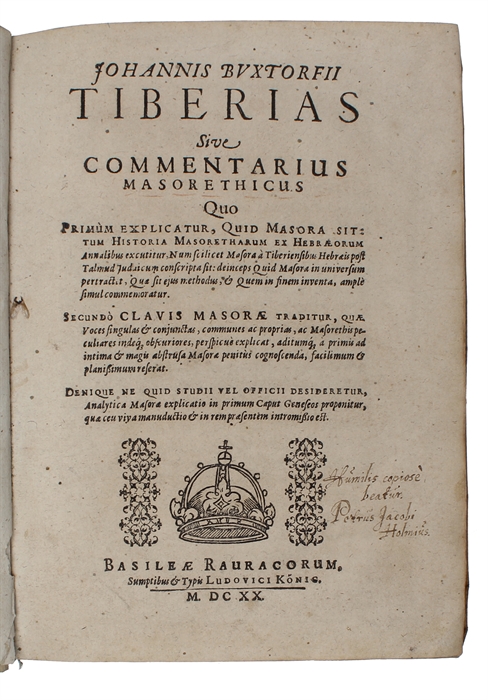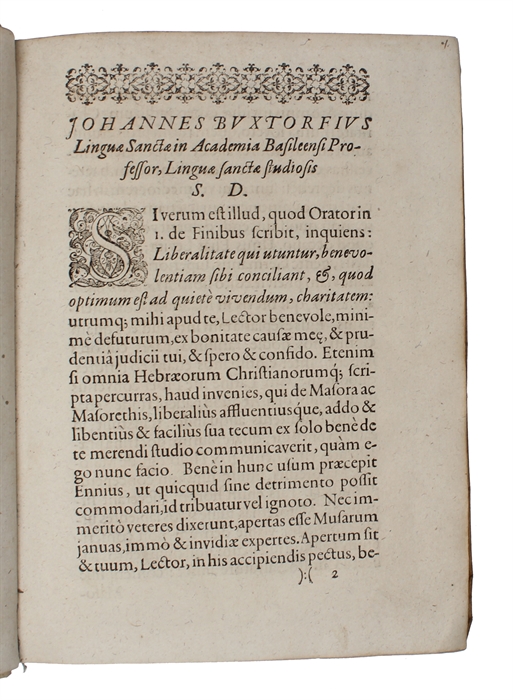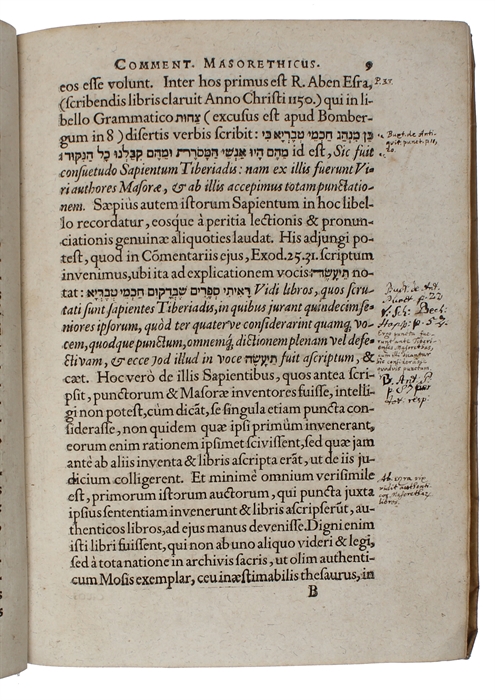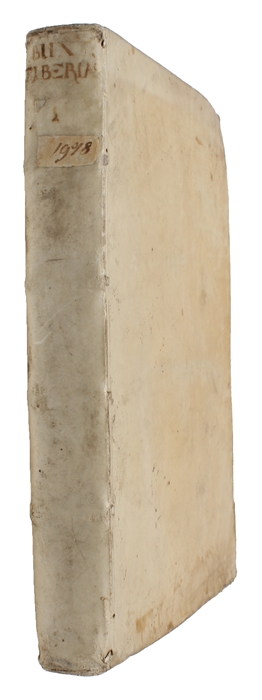BUXTORF, JOHANNES.
Tiberias, sive Commentarius Masorethicus.
Basle, Ludovic König, 1620.
4to. In contemporary limp vellum with yapp edges and title in contemporary hand to spine. Small paper-label pasted on to top of spine. Light soiling and wear to extremities. Previous owner name (Petrus Jacobi Holmius) to title-page. Neat marginal annotations in contemporary hand throughout, otherwise nice and clean. (16), 324 pp.
The uncommon first edition of Buxtorf’s work on the tradition of the Masoretes of Tiberias. Here Buxtorf discusses various aspects of Tiberias, including its geographical, historical, and cultural significance. Intended as the supplement to his famous Biblia Rabbinica the present work gained fame and acknowledgment in its own right. "Tiberias was the first Latin language introduction to biblical scholarship, and its paratextual elements, and the Masoretic apparatus" (The Oxford Handbook of Early Modern Theology, 1600-1800, edited by U.L. Lehner et al., 2016). "Tiberias is Buxtorf’s fullest and most impressive work on the history of the biblical text. He conceived it as the first of four proposed guides to the four parts of the Basel rabbinical Bible edition: Hebrew text, Targums, rabbinical Bible commentaries and Masora." (Burnett). Tiberias holds importance in Jewish history, particularly during the period of the Talmudic and post-Talmudic eras. The city is located on the western shore of the Sea of Galilee and is associated with the development of Jewish traditions and scholarship. While Buxtorf is perhaps more famous for his Hebrew lexicons and grammatical works, "Tiberias, sive Commentarius" reflects his broader interest in Jewish history and culture, specifically focusing on a city that played a notable role in the development of Jewish learning and tradition. Johann Buxtorf (1564-1629), the "Master of the Rabbis," despite being a Protestant, was a Hebrew professor at the University of Basel for thirty-nine years. Upon his death, his position passed to his son Johann, known as Buxtorf the Younger (1599-1664), and then to his grandson, Johann Jakob (1645-1704). Throughout his life, he worked on the Masoretic text of the Old Testament, largely established by the Tiberian School in the 9th century. This text defined the authoritative biblical canon within Judaism and served as a reference for most Protestant and Catholic translations of the Old Testament. Buxtorf's work was enlarged and expanded by his son Johannes Buxtorf the Younger, in a second edition printed in 1665.
The work is structured into three sections: Commentary on the Masorah, Key of the Masorah, and Critical Commentary. While Buxtorf maintains the belief that the Masoretic text represents the authentic version of the Bible, he embraces Levita's groundbreaking theory asserting that the masoretic vocalization and cantillation marks originated with Ezra and the Men of the Great Assembly.
Order-nr.: 60741




